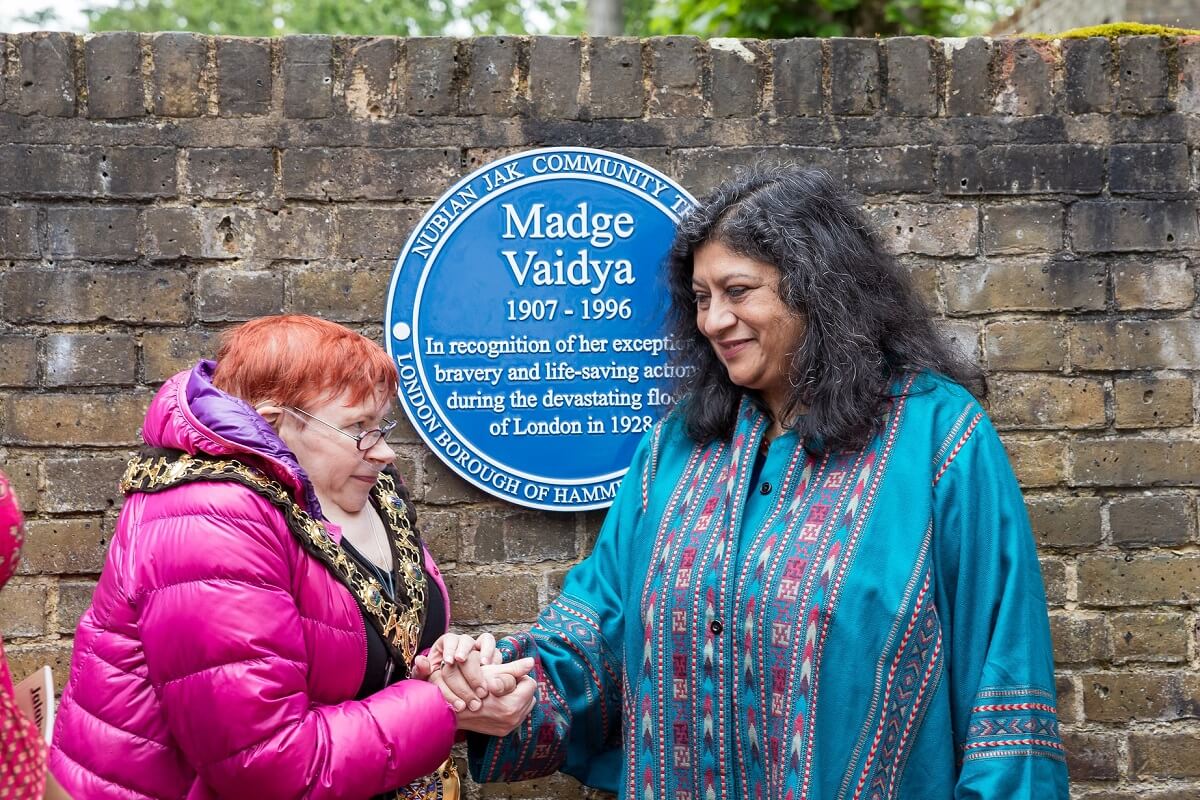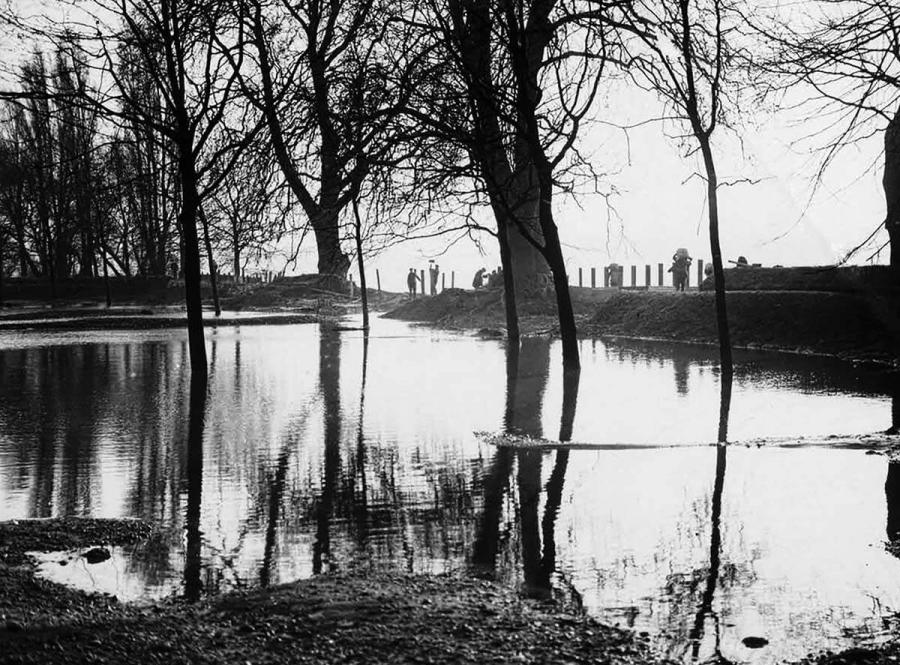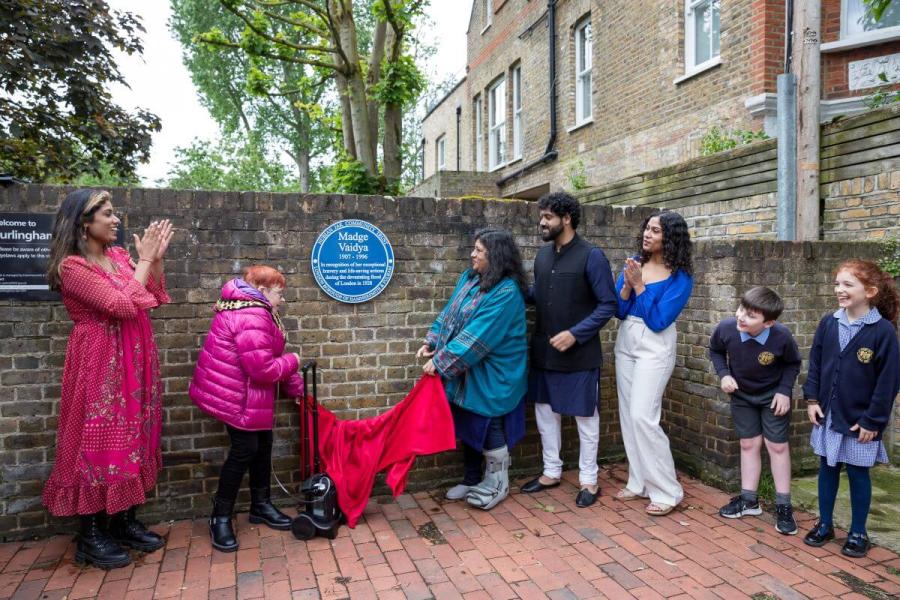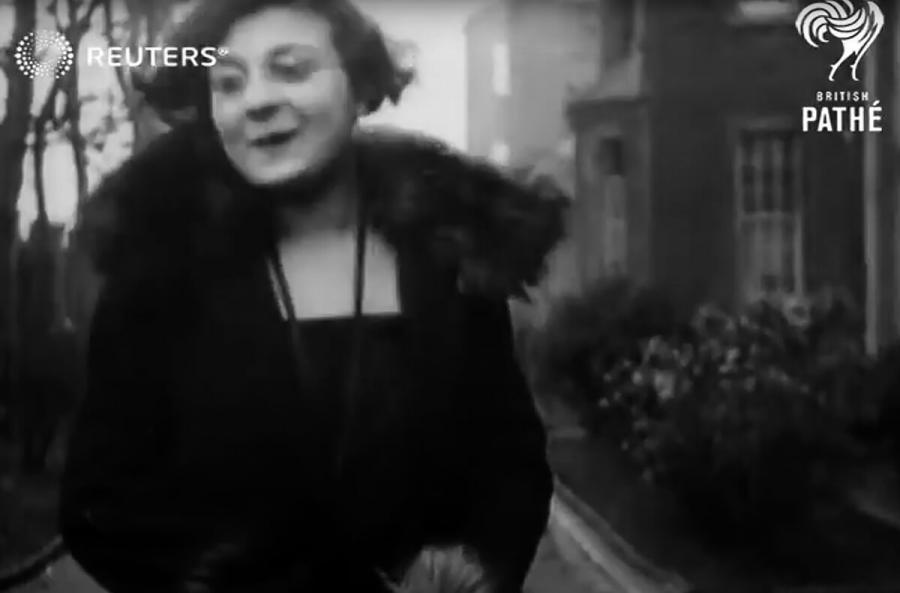
In the early hours of 7 January 1928, Londoners slept as flood water overwhelmed the banks of the Thames, inundating homes and drowning 14 people.
Thousands were made homeless after a combination of heavy rain, melting snow and a storm surge from the North Sea sent walls of water coursing through the capital, producing the highest levels ever recorded.
But out of the disaster emerged a remarkable story. A 20-year-old clerk called Madge Franckeiss and her younger brother Peter had been sleeping overnight with friends in a basement flat at Hurlingham Court Mansions in Fulham.
Madge woke at 2am, realised that her room was filling with water and that she couldn’t open the door because of the pressure from the flood, and smashed a window to swim out to safety.
Then she repeatedly swam back inside, lacerating her legs on the broken glass, to save first her 15-year-old brother, then his friend Billy Watson, 10, and finally Billy’s mother.
A blue plaque was unveiled on Tuesday 14 May with Madge’s descendants flying in from India to attend the ceremony. Check out all the photos from the day.
The blue plaque reads:
Madge Vaidya, 1907-1996, for her exceptional bravery and life-saving actions during the devastating flood of London in 1928.
H&F council installed the plaque in partnership with the Nubian Jak Community Trust.

Madge’s granddaughter Anasuya Vaidya, and great granddaughter Yashna Shetty and the Mayor of Hammersmith & Fulham, Cllr Patricia Quigley, took part in the plaque unveiling ceremony.
Yashna Shetty read a poem written by her own daughter, Jalabala, while great granddaughter Sareega Shetty sang one of Madge’s favourite songs. Great grandson Dhruv Shetty recited a Sanskrit verse on remembrance.
A dozen Year 5 pupils – from St John’s Walham Green primary school in Fulham – studied Madge’s life and achievements and put on a short performance.

Disaster at 2am
Tragically, the two Watson daughters, Irene and Dorothy, both 23, could not be saved, and their bodies were later recovered.
At an inquest, Fulham coroner Mr HR Oswald told Madge: “The courage you showed was worthy of any man, let alone a young girl not yet 21. If we have girls like this, I think we may fear nothing for the future generation of English people.”
A witness told the inquest: “I cried like a child as I saw a slip of a girl bleeding from I don’t know how many wounds, fighting in the water to save her friends. Thanks to her efforts, three people were saved, and not until she was told that others were safe would she consent to be saved herself.”
That flood overwhelmed central London defences, which had been built to withstand tides of 18ft above the low water mark. Today the Thames Barrier, opened in 1984, prevents any risk of a repeat… although climate experts fear that rising sea levels will need to be addressed again in future.
The 1928 disaster left parts of Hammersmith & Fulham underwater. Chelsea Embankment collapsed near the Tate Gallery, damaging many priceless paintings. Houses along Hammersmith Mall barricaded their front gardens with sandbags to try to stop the water.
It took weeks to repair the damage and pump brackish water from low-lying homes, tube stations and buildings.
Madge, who later married, became Madge Vaidya and moved to Delhi, was presented with a certificate to commemorate her bravery by the Lord Mayor of London. The Mayor asked her if she had any wish. She said she’d always wanted to hear Josephine Baker sing, and funds were duly raised to send Madge on a trip to Paris to hear, and meet, the singing legend.
A documentary entitled 1928: The year the Thames Flooded is available on Channel 5 and tells the story of Madge’s heroism. Watch it online here on the Channel 5 website.





